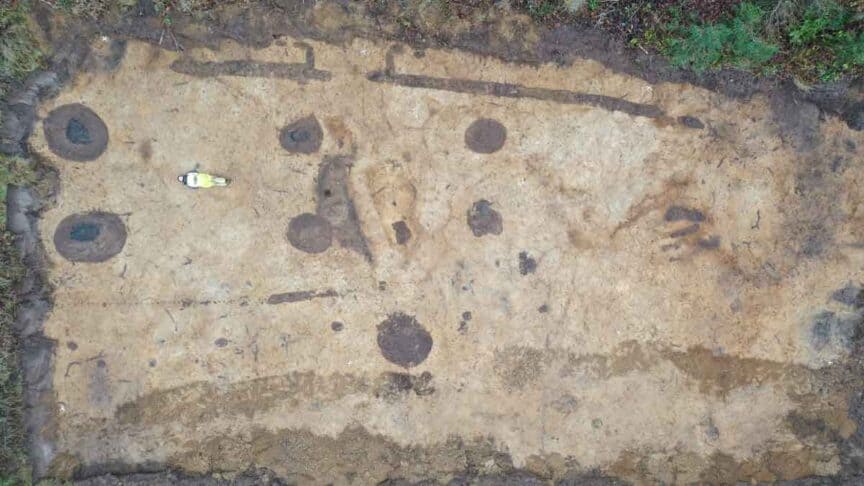The recent discovery of a Viking hall in Hune, Nordjylland, has shed new light on the social and political structures of Viking society. The hall, measuring approximately 40 meters long and 8-10 meters wide, was likely the site of political meetings and grand feasts, according to archaeologists from North Jutland Museums (Nordjyske Museer). The hall’s prestige and opulence indicate that it was likely used by the town’s elite, possibly even belonging to the family of the Viking Runulv the Cunning, whose runestone was found nearby.
Dating back to the late Viking Age, which spanned from 793 to 1066, the hall is a significant discovery, according to Thomas Rune Knudsen, the lead archaeologist on the project. “We have only had the opportunity to excavate a portion of the hall, but there are likely more houses buried under the soil to the east,” he said. “A building of this caliber rarely stands alone.”
The hall’s design bears similarities to the houses found at Harald Bluetooth’s ring forts, such as Fyrkat near Hobro and Aggersborg near Aggersund. This indicates that the hall was likely built during Harald Bluetooth’s reign, which began in the late 900s. The discovery of the hall has been described as the “largest Viking Age find of this type in more than 10 years,” and it provides new insights into Viking society’s elite class and their activities.
Archaeologists are currently excavating only a portion of the hall, and more work is yet to be done. They aim to uncover a detailed timeline of the hall’s construction and use by the end of 2023, which will provide valuable insights into the Viking Age. The discovery of the hall highlights the complexity and richness of Viking culture, deepening our understanding of this fascinating period of history.
